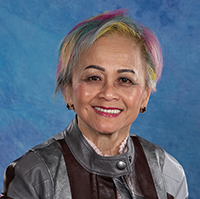
Dr. Durhane Wong-Rieger
President & CEO, Canadian Organization for Rare Disorders
All Canadians with rare blood disorders should have the same access to the best treatment. That’s the vision for the national Rare Disease Drug Strategy to be set up in 2022-23 with a $1 billion federal commitment. Regardless of where people live or their treatment needs and cost, patients should have equitable access. Today, this scenario is true for only some rare cancers, a few rare disorders, and very few rare blood disorders.
Among those with the best access are patients with hemophilia, who came together in creating a state-of-the-art program out of the tainted blood scandal of the 1980s.
In contrast, access to screening, clinics, emergency care, and appropriate medicines for thalassemia and sickle cell disease has been less exemplary. Barriers, especially to innovative medicines, have been even greater for those with ultra-rare conditions, such as, aplastic anemia, myelodysplastic syndromes, Waldenstrom’s anemia, thrombotic thrombocytopenic purpura (TTP), and paroxysmal nocturnal hemoglobinuria (PNH).
How can a national Rare Disease Drug Strategy help? Increasingly, reimbursement for treatments is based on health technology assessment (HTA), namely, cost-benefit assessment, which often disadvantages drugs that may not prolong life but improve quality of life. We encountered this with slow-release clotting factors for hemophilia and oral versus intravenous iron removal therapy for thalassemia. Traditional HTA methodology has a bias against novel therapies that have little immediate clinical impact but that reduce future events. This results in delays and denials for eculizumab (which reduces the risk of blood clots in PNH), lenalidomide (which reduces transfusion dependency for myelodysplastic syndromes), emicizumab (which stimulates factor production for hemophilia), luspatercept (which prolongs the life of red blood cells in thalassemia), and caplacizumab (which reduces the time to recovery for acquired-TTP).
The Canadian Organization for Rare Disorders has been consulting with multiple stakeholders on the Canadian Rare Disease Drug Strategy, specifically to develop innovative rare disease therapies with potential life-time benefits.


